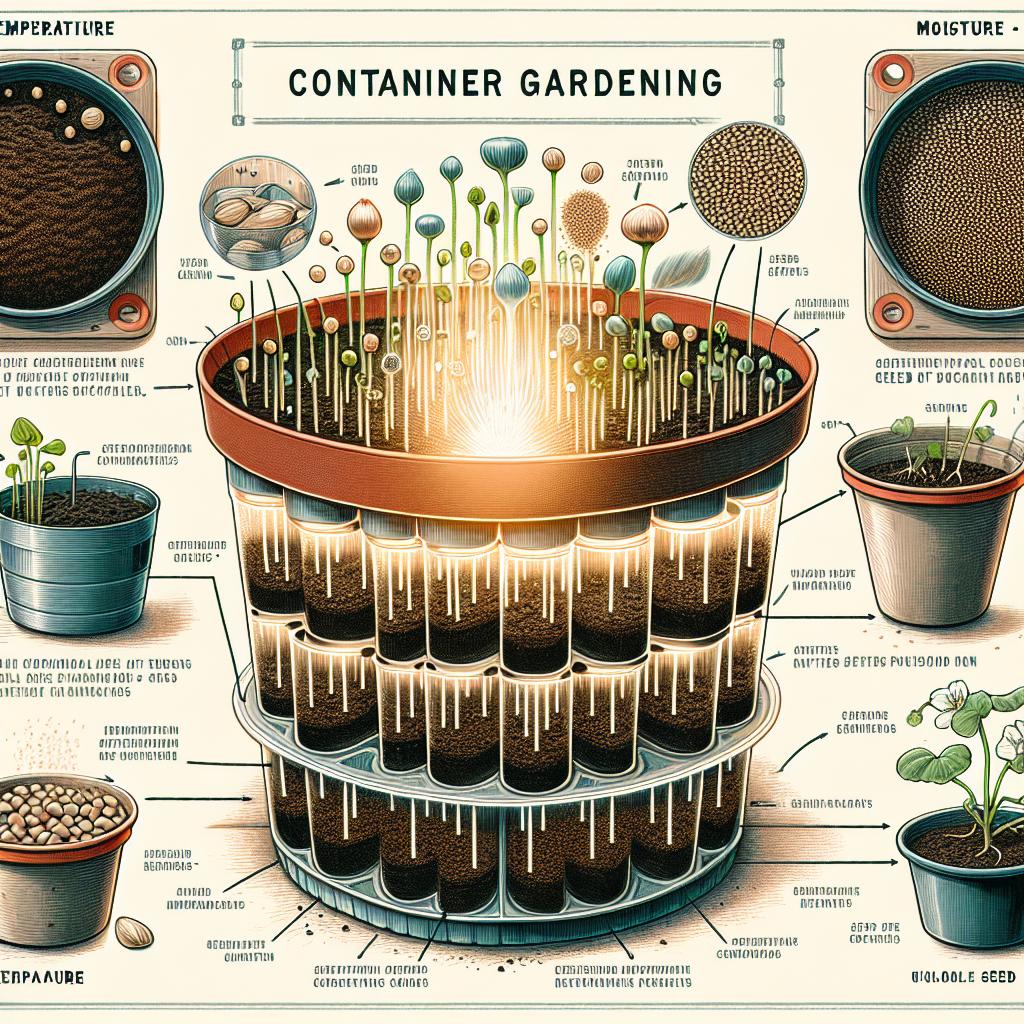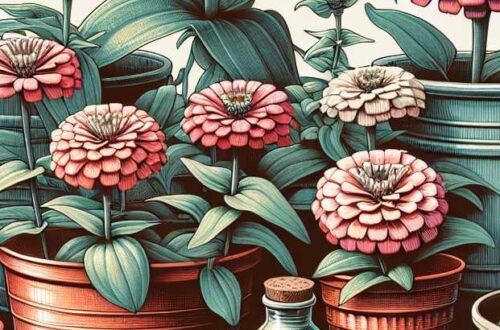Ensure Indoor Seeds Arent Duds by Calculating Germination Rate

1. Steps to calculate the germination rate of indoor seeds
Title: The Green Thumb Guide: Steps to Calculate the Germination Rate of Indoor Seeds
In the enchanting universe of indoor gardening, one of the most intriguing stages is the seed germination process. Whether you are a novice keen on sprouting your first basil seeds or a seasoned gardener aiming to cultivate a delicate bonsai, knowing the germination rate of your seeds has profound importance. It helps predict the seeds’ success rate, guides planting density, and offers insights into seed viability. This article will journey through the step-by-step process of calculating the germination rate of indoor seeds, forming the guide you need to elevate your gardening skills further.
Step 1: Assemble Supplies
Start by gathering all necessary items. You’ll need your chosen seeds, a seed tray or pots, seed-starting mix or compost, markers, a notebook, and a clear plastic bag or cover. Each of these aids your gardening endeavor, creating an enabling environment for seed germination.
Step 2: Seed Selection and Numbering
For accuracy, select a specific number of seeds. Professionals suggest quantities like 10, 25, 50, or 100 for seamless calculation. For instance, if you have chosen 50 seeds and 40 sprout, the germination rate would be an easily calculated 80%.
Step 3: Plant the Seed
Every seed has specific needs. Fill the seed tray or pots with your chosen growth medium and sow your seeds as directed on their packaging. If there is no instruction, a general rule of thumb is to plant the seed two times deeper than the seed’s width.
Step 4: Monitor Progress Persistently
Cover your seeds, place them in a warm area, and water them as needed. The temperature will depend on the seed type.
“They can come here, and they’ll receive education on the disease of addictions and disease of alcoholism, and they’ll learn about spirituality, and they’ll learn about the twelve steps, and they’ll learn just generally about co-dependency and what it does to a family.”
~ Triste Thach
Most seeds germinate best between 60-75 degrees F (15-24 degrees C). Ensure the growth medium stays moist but not waterlogged.
Step 5: Count Sprouted Seeds
The wait for sprouting varies drastically among different seeds, ranging from a few days to a few weeks. As the sprouts appear, it’s best to use a tally system; counting each day’s new sprouts and recording the number in the notebook.
Step 6: Calculate Germination Rate
Once the sprouting has ceased for a couple of days, it’s time to calculate. Count the total number of seeds that have successfully germinated and derive the germination rate. If, for instance, 38 out of 50 seeds have germinated, your germination rate is (38/50) x 100% = 76%.
Understanding the germination rate of your seeds gives you the power to plan your indoor garden efficiently and economically. It helps you anticipate how many seeds you would need for a successful yield. It might seem like a test of patience initially, but once your adorable tiny sprouts start reaching out for the light, the satisfaction will be unparalleled.
Remember, even the mightiest trees sprung from a small seed. Embrace each discovery you make in the process, and you’ll find indoor gardening is not just a hobby. It’s an enriching, life-affirming journey that ties us back to our roots of coexisting with nature. So pick up your trays, put on your gloves, and march towards mastering the art of germination. Solace, satisfaction, and a lush green indoor garden are just a few nurtured seeds away.
Like This? Try: 1. Steps To Calculate The Germination Rate Of Indoor Seeds

2. Factors impacting indoor seed germination rate
Title: Exploring The World of Indoor Seed Germination: Crucial Factors Influencing its Rate
Introduction:
Indoor seed germination is a profound technique used by garden enthusiasts, professional farmers, and amateur green thumbs around the globe. The process is not simply restricted to planting a seed in soil and waiting for it to sprout. It is multifaceted, impacted by an array of factors that can influence the rate at which seeds germinate. Understanding these elements tremendously helps in optimizing indoor seed germination rates, leading to healthier, more robust plants. This article will delve into the two primary variables that directly impact seed germination: temperature and humidity.
Key Factor 1: Temperature
The mother nature graces every seed species with an optimal temperature range, dictating its germination process. Whether it’s the cozy warm-weather veggies like tomatoes or pumpkin or the cool-season counterparts like spinach or broccoli, every seedling requires the ‘just-right’ temperature to sprout.
Most indoor seeds germinate best in a moderate range between 68 to 86 degrees Fahrenheit. While cooler than ideal temperatures can delay germination, temperatures too high may result in unsuccessful germination. The reason? Seeds have specific physiological processes that activate best within their optimal temperature range.
Under too cold or warm conditions, these processes slow down or halt, adversely affecting germination. Therefore, maintaining constant temperature using indoor gardening might be a means to influencing germination rates positively. Here, tools like heat mats can control the soil temperature, providing an ideal nurturing ground for seeds.
Key Factor 2: Humidity
Humidity is not to be overlooked when discussing the rate of indoor seed germination. ###blockquote### Often described as the percentage of water vapor in the air, humidity plays a critical role in creating a conducive environment for seeds to germinate.
Seeds require adequate moisture to initiate the germination process. This moisture softens up the seed, triggering the enzymatic activity that leads to the development of the embryonic plant. However, achieving the perfect humidity balance is a gardeners’ balancing act. While too little moisture results in the seed drying out, excessive water can drown the seed and promote fungal growth, affecting germination negatively.
Highly humidity-controlled indoor growing systems, such as domes or propagators, allow gardeners to control the moisture levels effectively in their indoor growing space. Paired with an effective watering routine, these systems create an amiable atmosphere for seeds to germinate and thrive optimally.
Conclusion:
The journey from seed to sprouting seedling is an intricate process, influenced by the right blend of temperature and humidity. While these are not the only players in the germination arena, they certainly hold predominant roles. As indoor gardeners, understanding and controlling these parameters can set the stage for successful year-round indoor gardening, bringing you closer to your dream green space. Become the master of your indoor gardening expedition by maintaining the ‘just-right’ temperature and humidity levels for your seeds, encouraging them to germinate faster and healthier. With this insight, your horticultural journeys are bound to be more fruitful, fulfilling, and indeed, greener.
Learn More Here: 2. Factors Impacting Indoor Seed Germination Rate

3. How to improve low germination rates in indoor seeds
Title: Cultivating Vitality: Strategies to Improve Low Germination Rates in Indoor Seeds
As the saying goes, ‘From a tiny seed grows a mighty tree.’ Undertaking the nurturing journey from seed to plant can be a rewarding endeavor, but what happens when your seeds fail to thrive—the culprits being low germination rates? This common gardening hitch can transform a fulfilling pursuit into a frustrating ordeal. Fortunately, there are some proven strategies to master these challenges. Below, we dive into three effective methods to improve low germination rates in indoor seeds, thus ensuring your indoor garden flourishes with abundant life and verdant color.
1. Perfect Timing: Understanding the Role of Temperature
Seeds are remarkable organisms that carry the intricate blueprints of life within their tiny shapes. They patiently wait for the right conditions, particularly temperature, to release their stored life energy. Planting your seeds too soon or too late might result in low germination rates. Each seed species has a temperature sweet spot for germination. For instance, tomatoes grow well at a temperature range between 70 and 75°F, while lettuce prefers a cooler temperature of around 60°F.
Consider investing in a seedling heat mat, especially in the colder months. This tool provides a constant and evenly distributed heat that can be vital to ensuring your seeds germinate effectively. Use a thermometer to monitor temperature levels closely, and you’ll be on your way to fostering rapid and robust seed germination.
2. Soil Sorcery: The Importance of Sterilized, Moist, and Well-Drained Soil
Seeds require a secure, nutritive base to sprout and grow—a realm where roots can stretch out and strengthen. Just like a castle is built on strong foundations, your seeds need the best soils to germinate and bloom. Seed-starting mixtures versus garden soil are a valuable choice as they are lighter, highly absorptive, and often sterilized to ward off diseases that typical garden soil may harbor.
Maintaining optimal soil moisture is of the essence. ###blockquote### Overwatering can contribute to damping-off disease, leading to poor germination. Don’t let the soil dry out, either. Balance is key. A good tip is to water generously after sowing, then gently mist the soil surface to provide consistent moisture until you witness the joyous sprout of green.
3. Light and Lofty: Provide Adequate Light and Opt for Prior Soaking
Sunlight is a plant’s primary food source. Most seeds, however, do not require light to germinate but need immediate exposure to light once they sprout. Ensure your seedlings aren’t stretching or ‘reaching’ for the light, which can lead to weak, leggy plants. Place them in a south-facing window or use grow lights to supplement natural light.
Prior soaking of seeds is an age-old practice, often overlooked by novice gardeners. By allowing seeds to soak in a dish of lukewarm water for up to 24 hours, you encourage the breaking of their dormancy and speed up germination.
Raising an indoor garden from seed is not merely a hobby; it’s an art interwoven with science. Improving your seed germination rates requires time, patience, and understanding, much like the seeds themselves seek the right circumstances to unfurl into life. By optimizing temperature conditions, selecting the right soil, maintaining proper moisture, and providing ample light, you can stack all odds in your favor. May your garden grow as lush and bountiful as your commitment to the seedlings you so lovingly nurture!
Like This? Try: 3. How To Improve Low Germination Rates In Indoor Seeds






